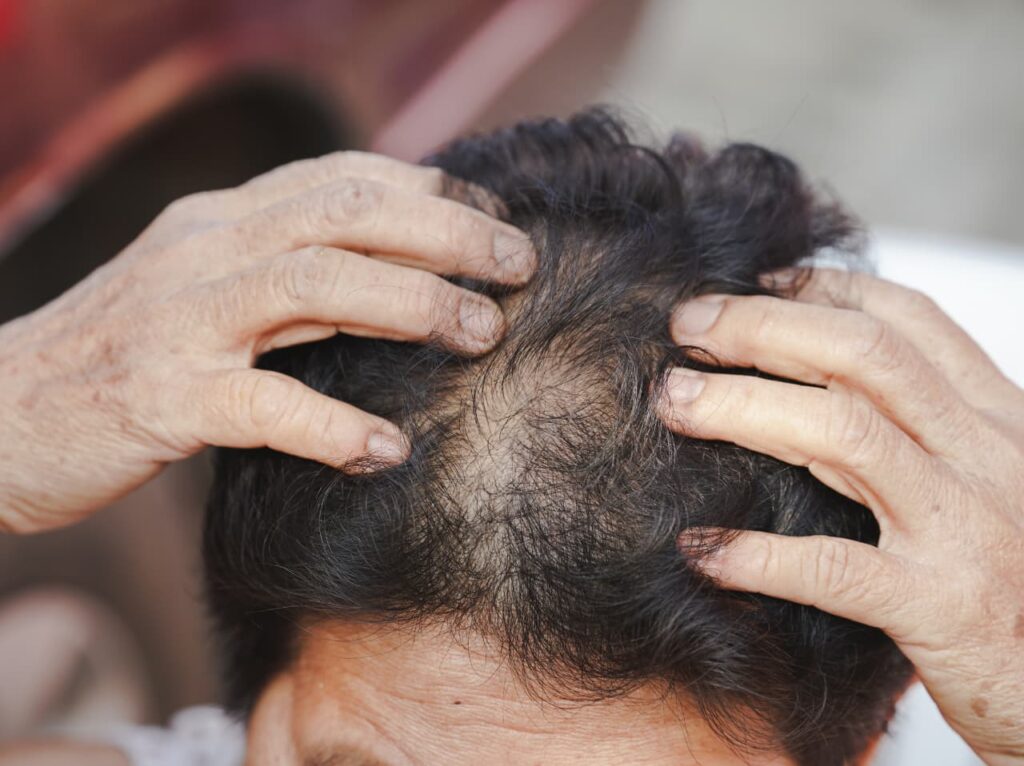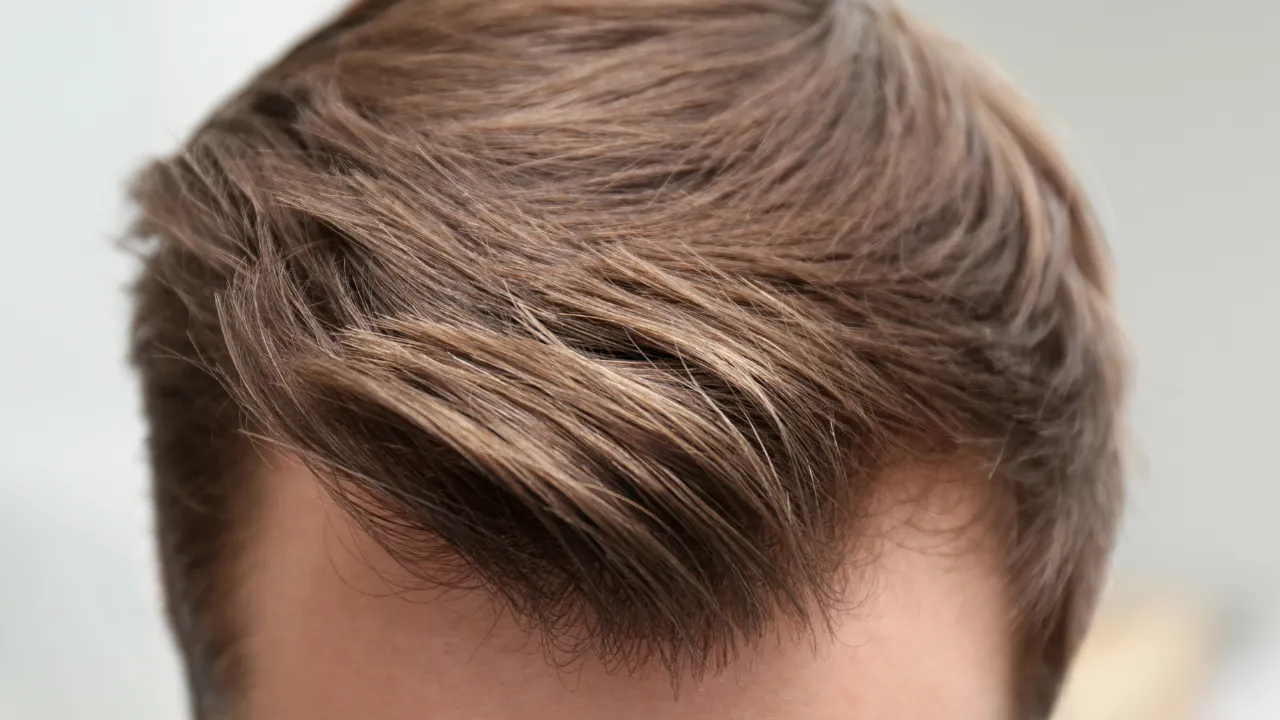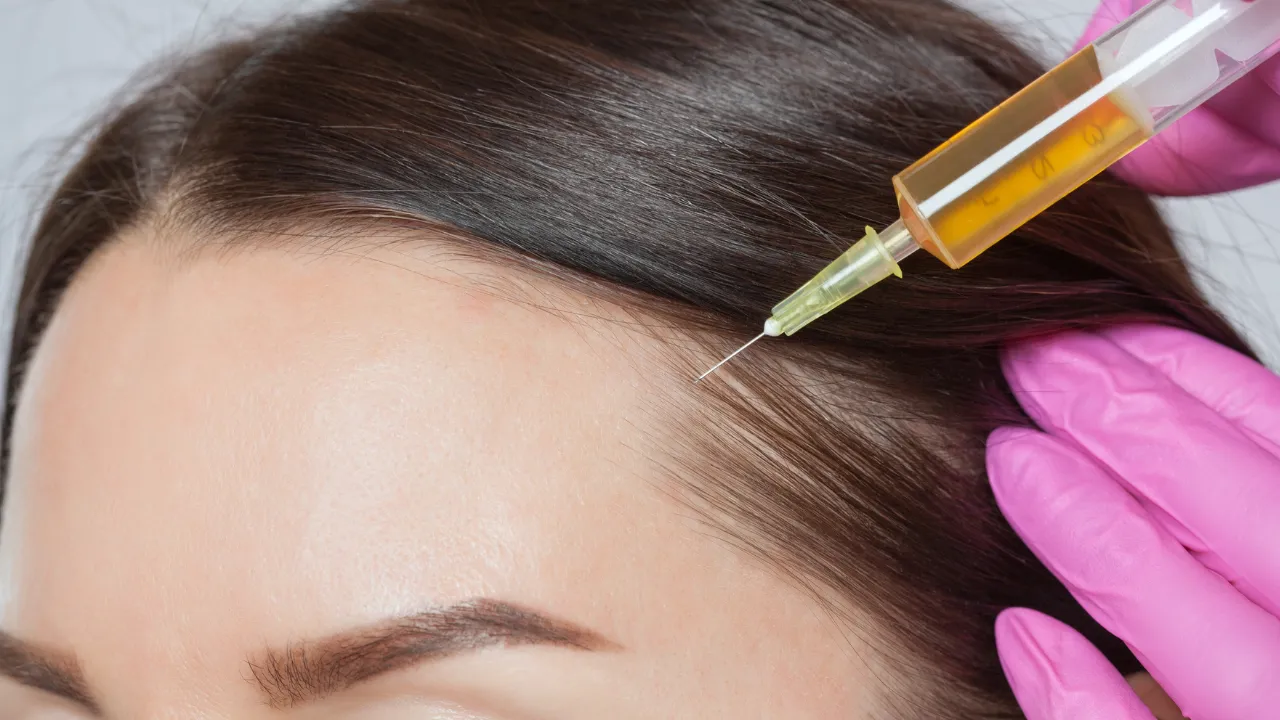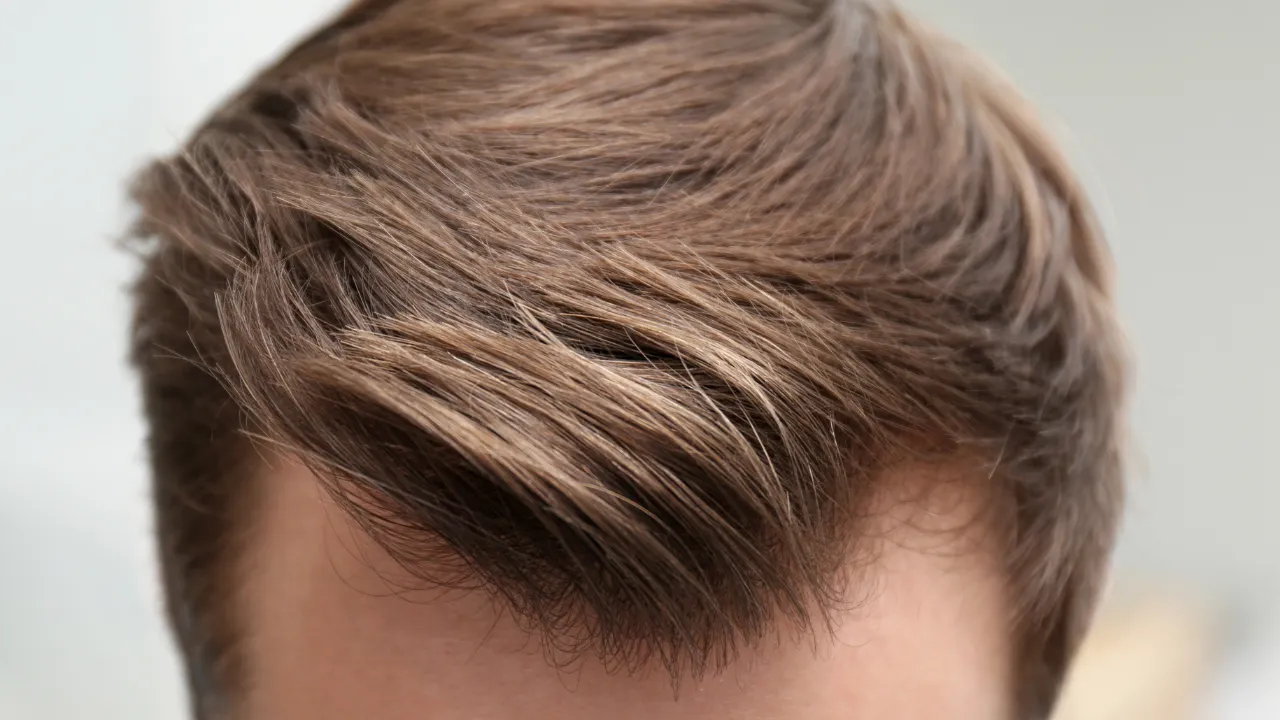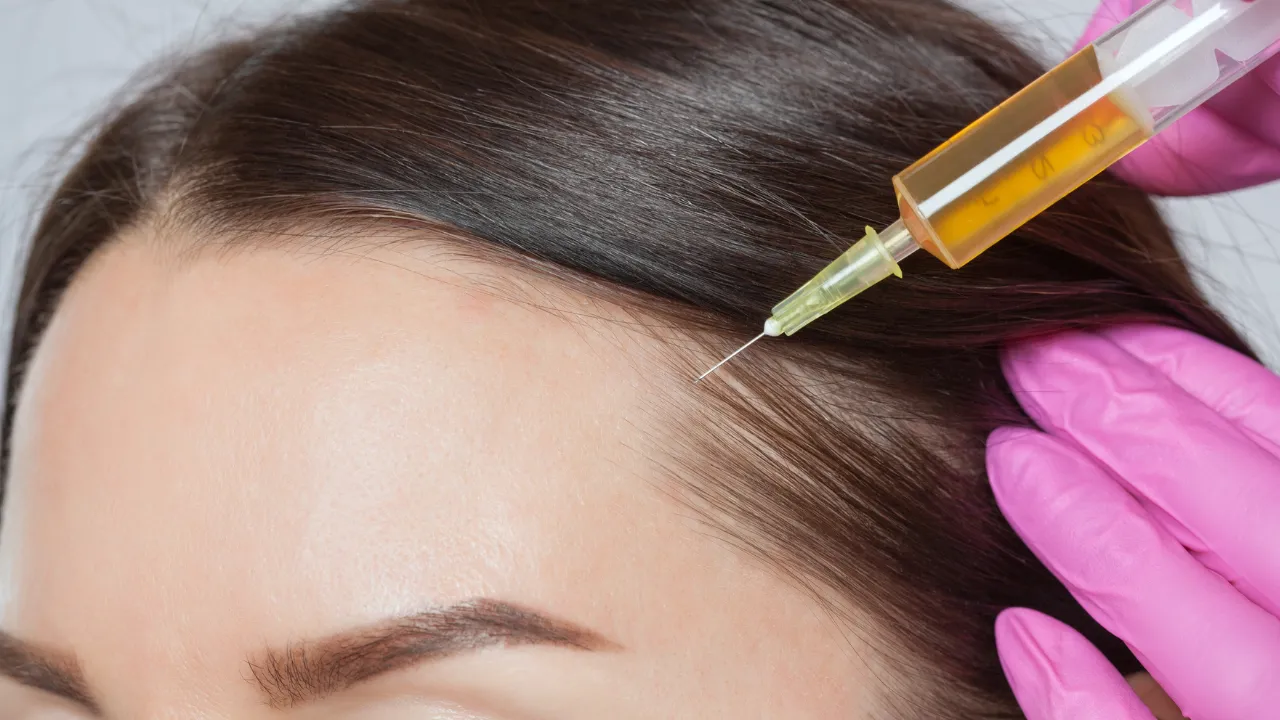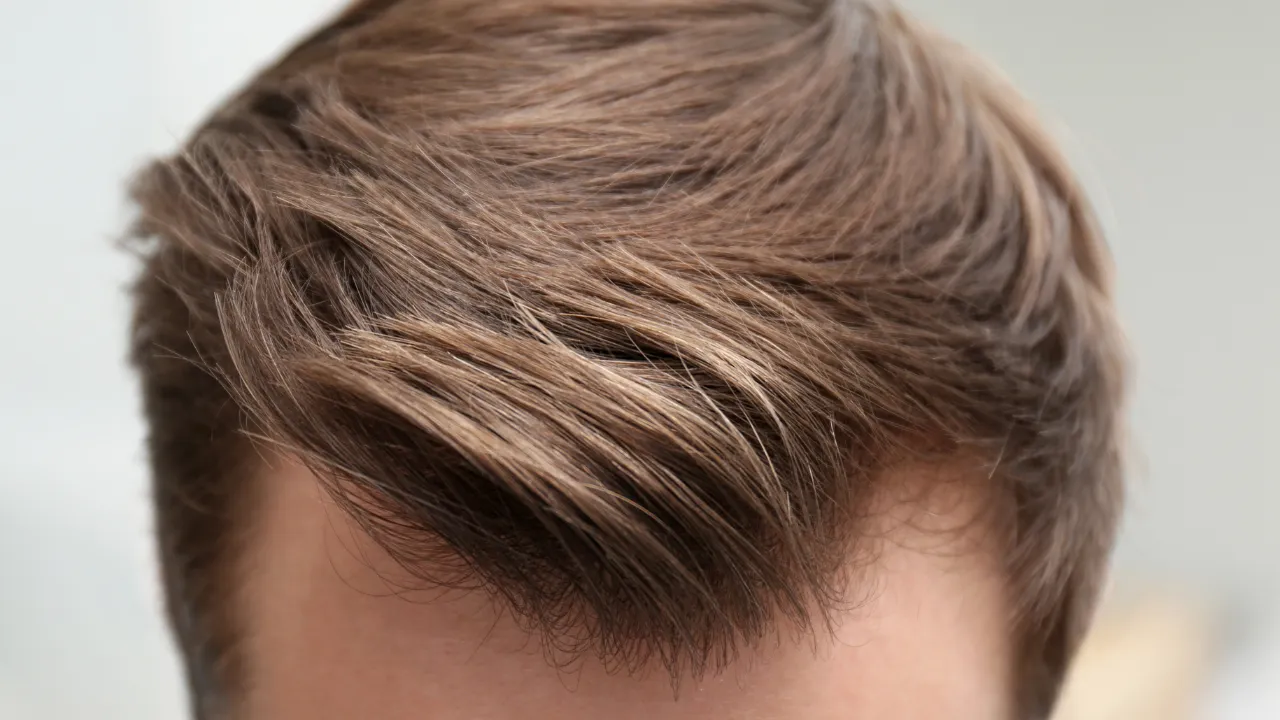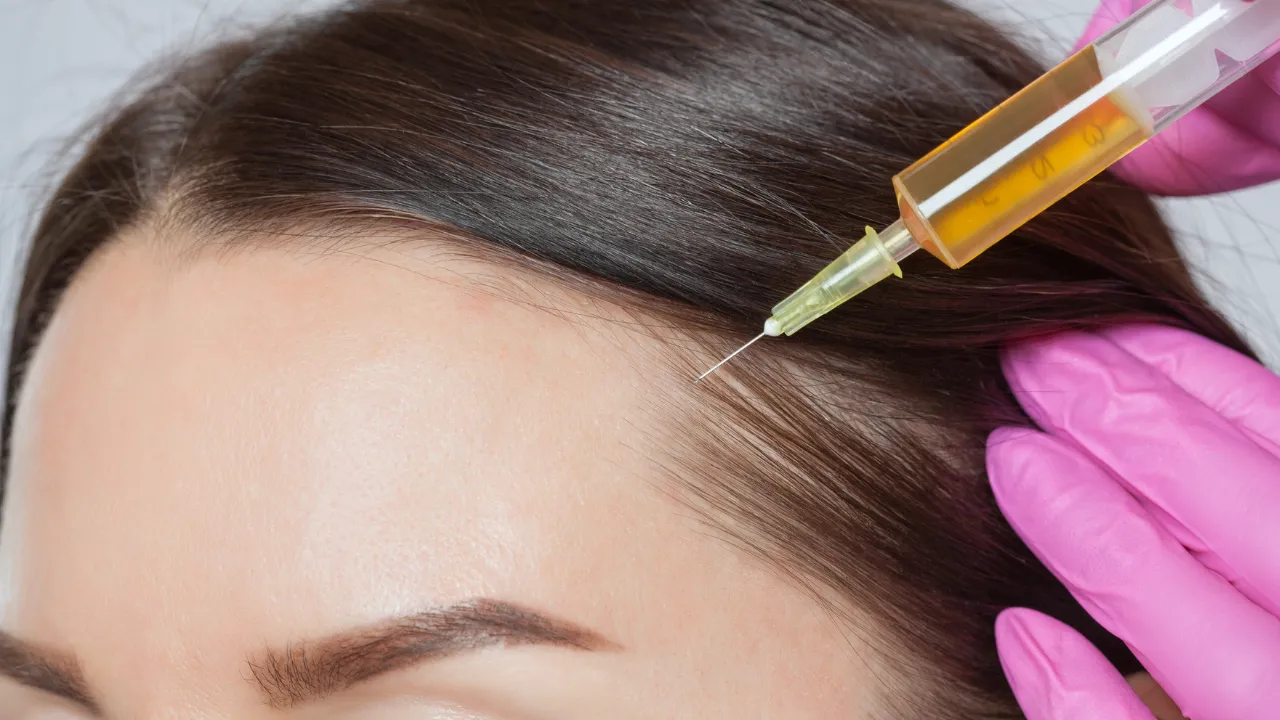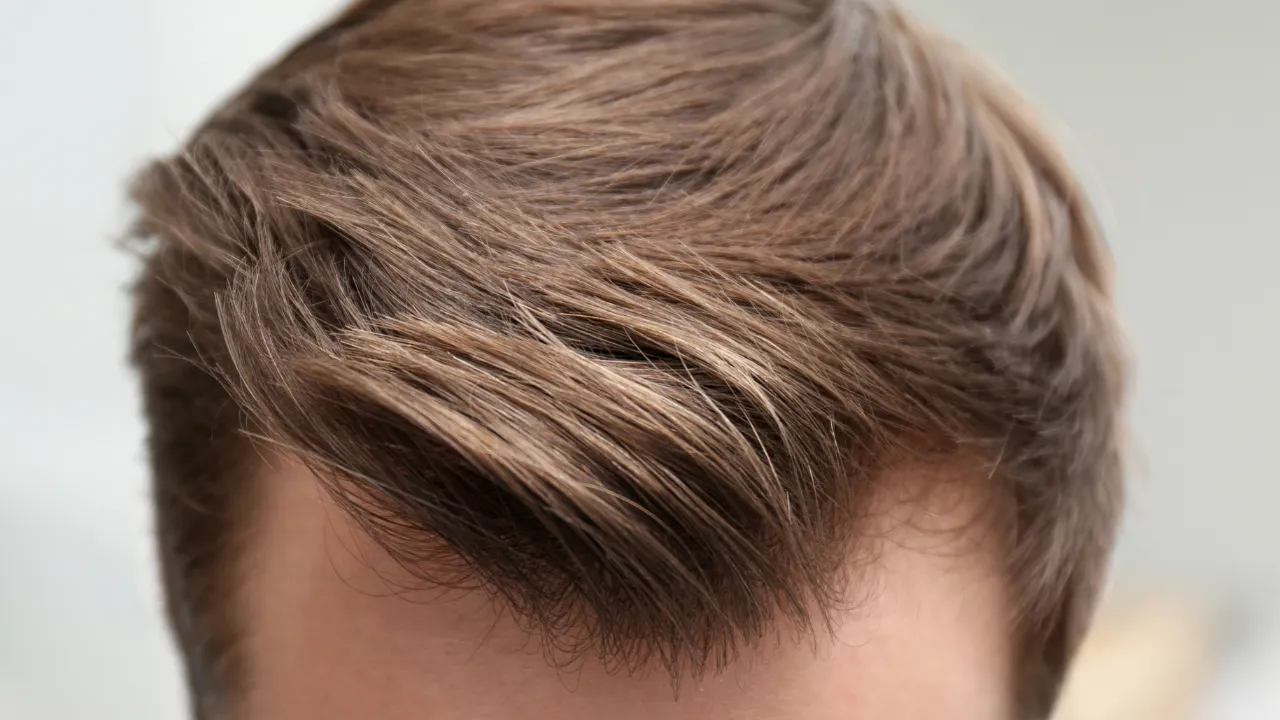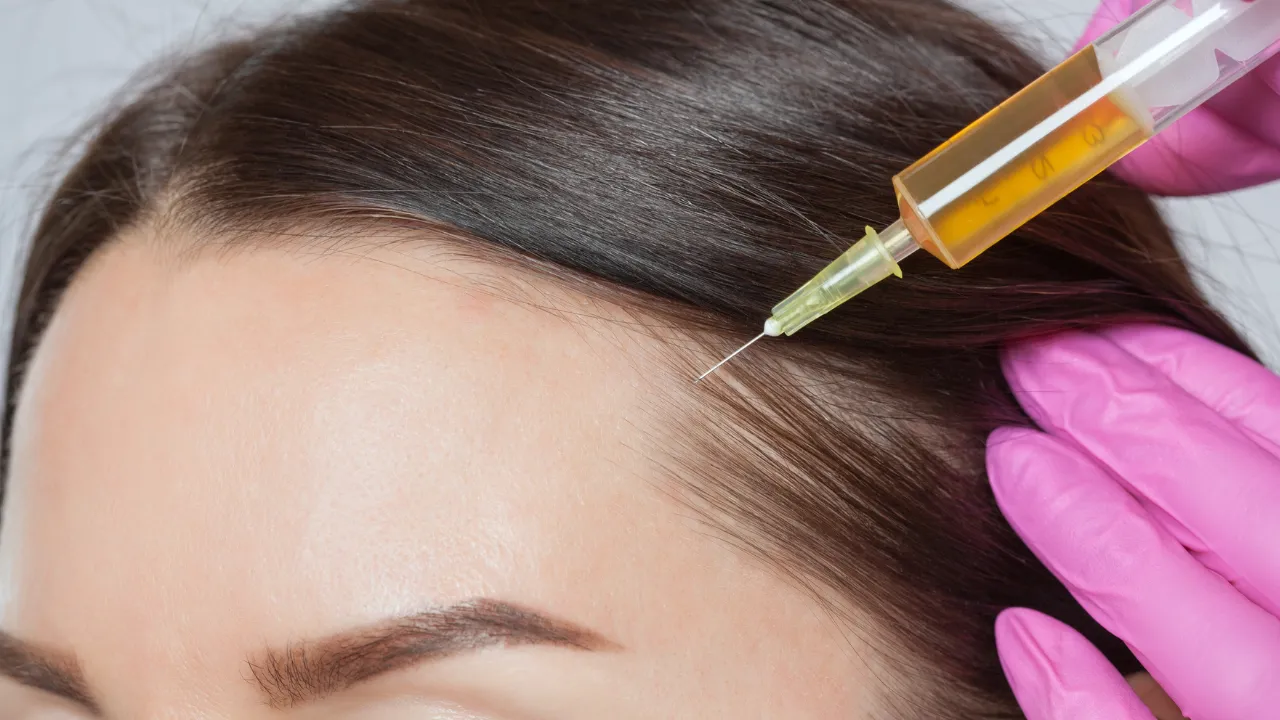Table of Contents
ToggleThe difference between androgenetic alopecia vs telogen effluvium lies in what causes the hair loss and how long it lasts. Androgenetic alopecia is a genetic condition influenced by hormones that leads to gradual thinning and permanent follicle shrinkage. In contrast, telogen effluvium is a temporary shedding phase triggered by stress, illness, or hormonal changes. Knowing which condition you have helps you select the right treatment and protect long-term scalp health.
At Kopelman Hair, the focus is on identifying the true cause of hair loss rather than masking its symptoms. Using advanced diagnostics and clinical precision, Dr. Ross Kopelman designs personalized treatment plans for both genetic and temporary shedding. Each plan prioritizes accuracy, safety, and visible improvement to help patients achieve healthier, fuller hair.
Key Takeaways
- Androgenetic alopecia is a genetic, hormone-driven condition that causes slow and permanent thinning, while telogen effluvium is a short-term shedding phase often triggered by stress or hormonal shifts.
- Accurate diagnosis through scalp imaging, blood testing, and trichoscopy determines whether hair loss is chronic or reversible.
- Treat androgenetic alopecia consistently with therapies such as Minoxidil, PRP, or hair transplantation, while telogen effluvium typically improves after addressing its root cause.
- Balanced hormones, proper nutrition, and stress control are key to preventing and managing both conditions.
- Professional care at Kopelman Hair provides medically guided, customized treatment to restore healthy growth and confidence.
Understanding the Two Conditions
What Is Androgenetic Alopecia?
Is the most common form of hereditary hair loss in men and women. Hair follicles gradually become sensitive to dihydrotestosterone (DHT), a hormone that shortens the hair growth cycle. As follicles shrink, the strands grow thinner and eventually stop producing new hair. While this process is progressive, early treatment can slow it and preserve remaining density.
What Is Telogen Effluvium?
Occurs when a large number of hairs enter the resting (telogen) phase at once. The condition often develops after physical or emotional stress, illness, or hormonal shifts such as pregnancy or menopause. Hair shedding usually begins two to three months after the trigger and improves within several months as the body regains balance.
Causes and Triggers
Why Androgenetic Alopecia Occurs
Genetics and hormones are the main contributors. The enzyme 5-alpha reductase converts testosterone into DHT, which weakens follicles and causes miniaturization over time. Aging, family history, and hormonal changes further accelerate the process. Identifying early signs allows patients to slow progression before significant thinning occurs.
What Triggers Telogen Effluvium
Internal or external stress disrupts the normal hair growth cycle and triggers telogen effluvium. Common triggers include:
- Major surgery or serious illness
- Hormonal fluctuations from childbirth or menopause
- Nutrient deficiencies or restrictive diets
- Emotional stress or prolonged fatigue
Once the underlying cause is treated, hair often regrows naturally within a few months.
How to Identify Which Condition You Have
Signs of Androgenetic Alopecia
- Gradual thinning in areas like the temples or crown
- A widening part line or visible scalp
- A family history of similar hair loss
Signs of Telogen Effluvium
- Sudden shedding across the entire scalp
- Excess hair loss during brushing or washing
- Noticeable thinning two to three months after stress or illness
Dr. Ross Kopelman confirms diagnoses through scalp imaging, trichoscopy, and lab testing that evaluates hormone levels, thyroid function, and nutritional balance.
Diagnosis and Evaluation at Kopelman Hair
Evaluation begins with a thorough consultation and noninvasive testing to understand each patient’s unique hair loss pattern. The process may include:
- High-magnification scalp imaging to assess follicle density
- Blood testing to check hormone and nutrient levels
- Microscopic examination of follicles to identify miniaturization or resting phases
These tests determine whether hair loss is chronic or temporary. Based on results, Kopelman Hair creates a targeted plan that restores scalp health and promotes regrowth.
Treatment Options
Androgenetic Alopecia
- Topical or Oral Medications: Minoxidil improves blood circulation to the scalp, while Finasteride reduces DHT levels to slow thinning.
- Platelet-Rich Plasma (PRP) Therapy: PRP uses growth factors from the patient’s own plasma to stimulate dormant follicles and boost density.
- Low-Level Laser Therapy (LLLT): This low impact method uses focused light to increase follicle energy and encourage regrowth.
- Hair transplantation restores thinning areas by relocating healthy donor follicles for permanent, natural results.
Telogen Effluvium
- Addressing the Underlying Cause: Restoring hormonal or nutritional balance often reverses shedding.
- Nutritional Support: A diet rich in protein, iron, zinc, and vitamin D strengthens hair from within.
- Gentle Hair Care: Use mild shampoos, avoid tight hairstyles, and limit heat styling to prevent breakage.
- Topical Treatments: Temporary Minoxidil use can help restart growth while the scalp recovers.
Can Both Conditions Occur Together?
Yes. Many patients experience telogen effluvium alongside androgenetic alopecia, which increases shedding and slows recovery.
In these cases, Dr. Ross Kopelman combines targeted therapies to address both the short-term trigger and the long-term genetic component. This dual approach improves scalp coverage, density, and overall hair quality.
Hormonal and Nutritional Considerations
Hormonal Factors
DHT drives permanent follicle shrinkage in androgenetic alopecia, while estrogen and thyroid fluctuations can trigger telogen effluvium. Life stages such as pregnancy, menopause, or thyroid disorders often lead to temporary shedding. Testing and balancing hormone levels help stabilize growth and prevent further loss.
Nutritional Factors
Deficiencies in essential nutrients weaken hair structure and slow recovery. Iron, zinc, vitamin D, and protein are crucial for strong, healthy follicles. A balanced diet and proper hydration promote regrowth, and doctors may recommend supplements when needed.
Lifestyle and Preventive Care
Daily habits can greatly influence the strength and resilience of your hair.
- Manage stress through consistent exercise, adequate rest, or mindfulness practices.
- Keep the scalp clean and avoid chemical or heat-based damage.
- Use silk pillowcases to minimize friction and prevent breakage.
- Avoid smoking and extreme dieting, which can disrupt hormone balance and slow regrowth.
These small but steady habits help maintain a healthier scalp environment for continued growth.
When to See a Specialist
Seek expert help if:
- Hair loss lasts longer than six months
- You notice a widening part line or visible thinning
- Shedding continues after recovery from illness or childbirth
Early evaluation at Kopelman Hair allows timely diagnosis and treatment, preventing permanent follicle damage. Prompt care improves the chances of restoring density and preserving remaining hair.
Emotional Impact and Support
Hair loss can affect self-image and emotional well-being. The team at Kopelman Hair provides compassionate guidance and education throughout treatment. Patients experience physical restoration and renewed confidence, supported by medical professionals who understand their needs.
Final Advice
Understanding the difference between androgenetic alopecia and telogen effluvium is essential for proper treatment. Androgenetic alopecia is genetic and progressive, while telogen effluvium is temporary and reversible. Both respond best to early intervention and professional evaluation.
Dr. Ross Kopelman combines clinical experience, advanced technology, and a patient-centered approach to deliver lasting, natural results. With accurate diagnosis and consistent care, patients can restore healthy hair, regain confidence, and maintain long-term scalp health.


